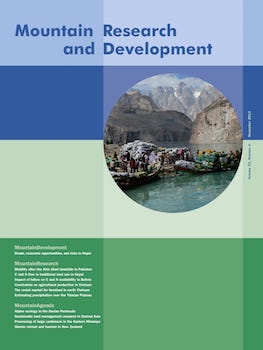Articles (1)
EDITORIAL (1)
MOUNTAINRESEARCH (6)
MOUNTAINAGENDA (4)
MOUNTAINPLATFORM (2)
MountainMedia (4)

No abstract available
No abstract available
No abstract available
No abstract available
No abstract available
No abstract available
